Peak District's last surviving mountain hares 'at risk'
- Published
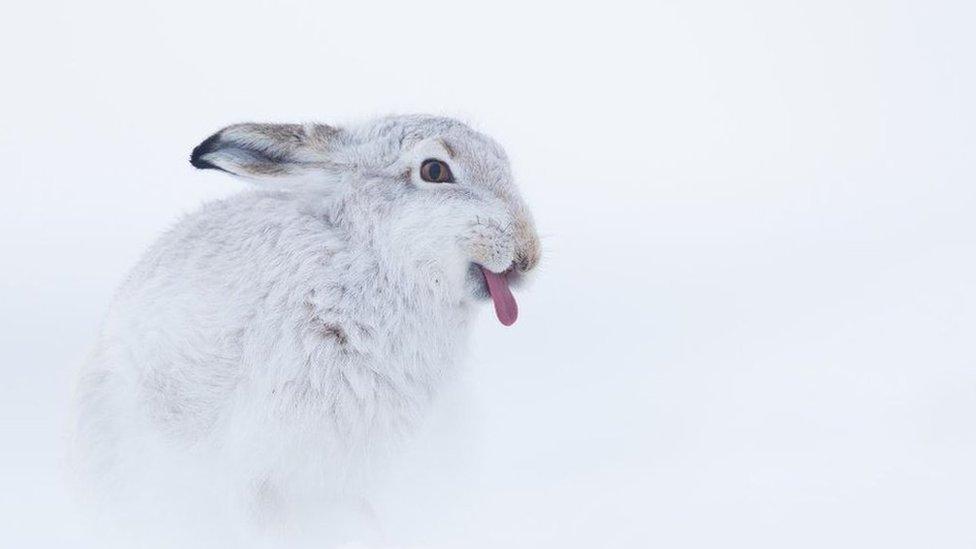
Mountain hare pelage is brown in summer and turns white in winter
England's last surviving population of mountain hares may be under threat due to global warming, a conservation group has said.
Recent studies suggest there are about 2,500 of the creatures in the Peak District which, experts say, is "not large" for an isolated population.
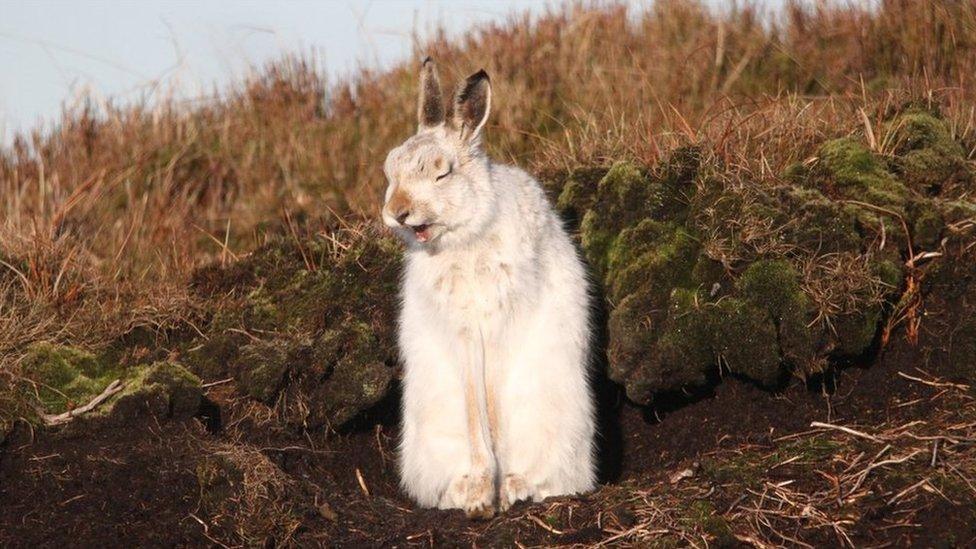
PTES describes the creatures as "shy, but striking"
The People's Trust for Endangered Species (PTES) is funding research to see if the number is in decline.
"These hares could be in trouble," said Nida Al-Fulaij from the trust.
'Shy but striking'
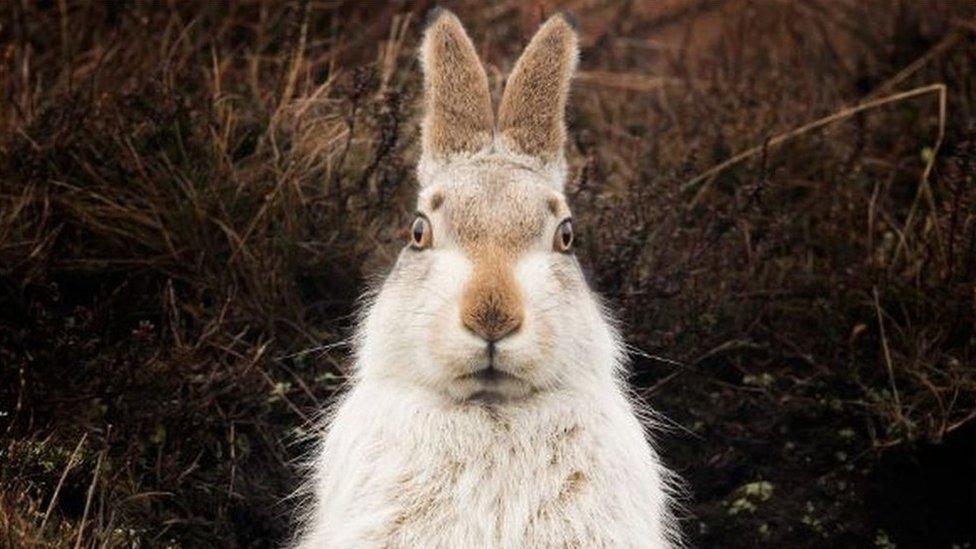
Efforts to reintroduce the species in England in the 1800s proved successful in the Peak District
Mountain hares - a sister species to the Arctic hare - died out in England during the last ice age.
"Reintroduction attempts were made in the late 1800s, and while most were unsuccessful, against all odds those released into the Peak District survived," said Ms Al-Fulaij.

In 2018, the Mammal Society and Natural England estimated there were about 2,500 hares in the Peak District - but populations can fluctuate
"The Peak District's altitude and colder climate is ideal habitat for mountain hares, who have adapted perfectly.
"But, with the onset warmer and more erratic weather, these hares could be in trouble."

PTES say they need to understand how many hares are left and what threats they face
The trust said it believes climate change is an increasing risk to the creatures' survival, making summers too warm and reducing food sources, such as heather.
Reduced snow coverings mean the hares may not be as camouflaged in winter, despite their white coats.
"We can't let them die out," Ms Al-Fulaij added.
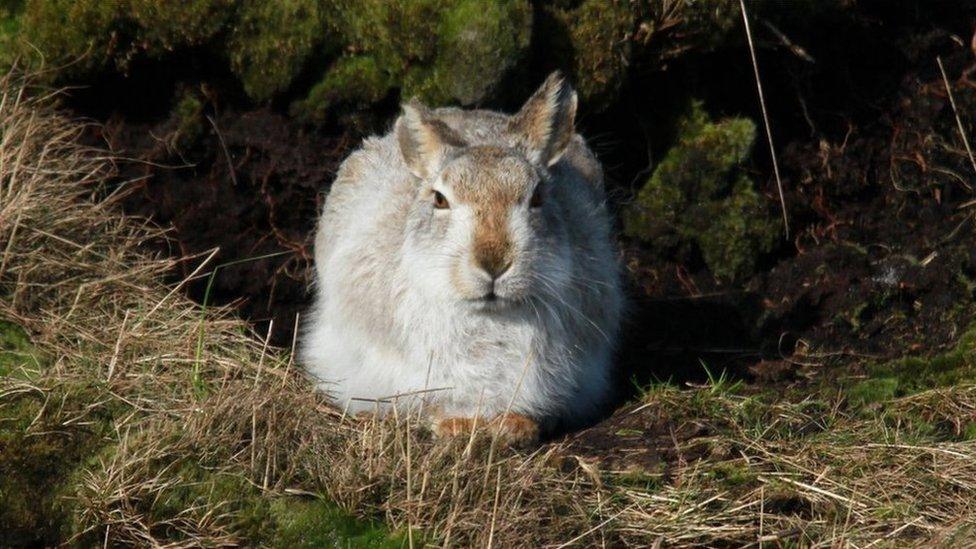
Experts fear global warming may be putting the hares at risk
She hopes the study's findings - due to be published later in the year - will help guide successful reintroductions of the "shy, but striking" species, as well as safeguarding those that are left.
The research is being conducted by Carlos Bedson, a biologist from Manchester Metropolitan University.
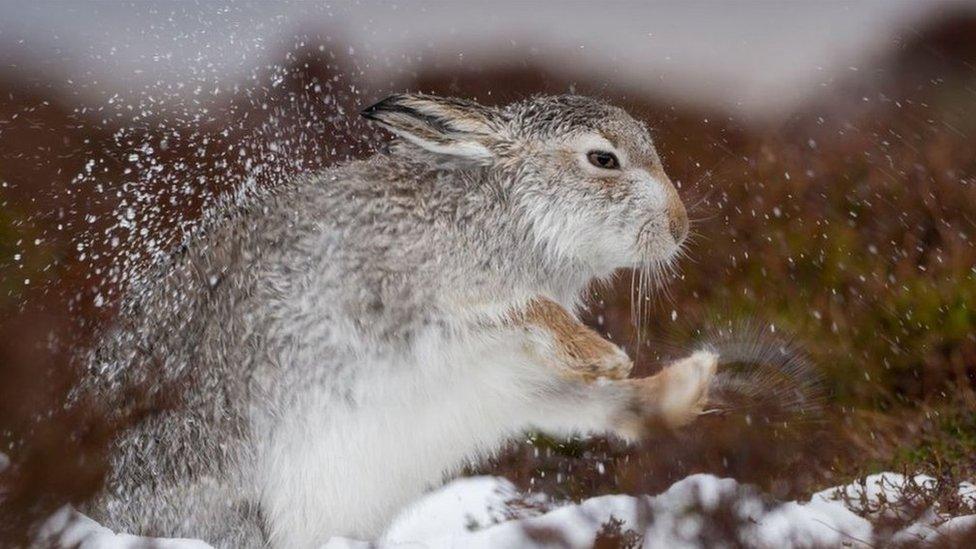
PTES hopes the study will safeguard the hares' future
Mr Bedson said: "Mountain hares are effectively an ice age Arctic animal - and it is a privilege to be able to see one in England, surviving here at lower latitudes.
"We are so lucky to have them."
He added it was amazing to think that "in normal times", "you could be working on a Friday in your office or school or factory, and then on the Saturday you could drive to the Peak District and go out and have an Arctic wildlife exploration experience all of your own".

Hare loss?
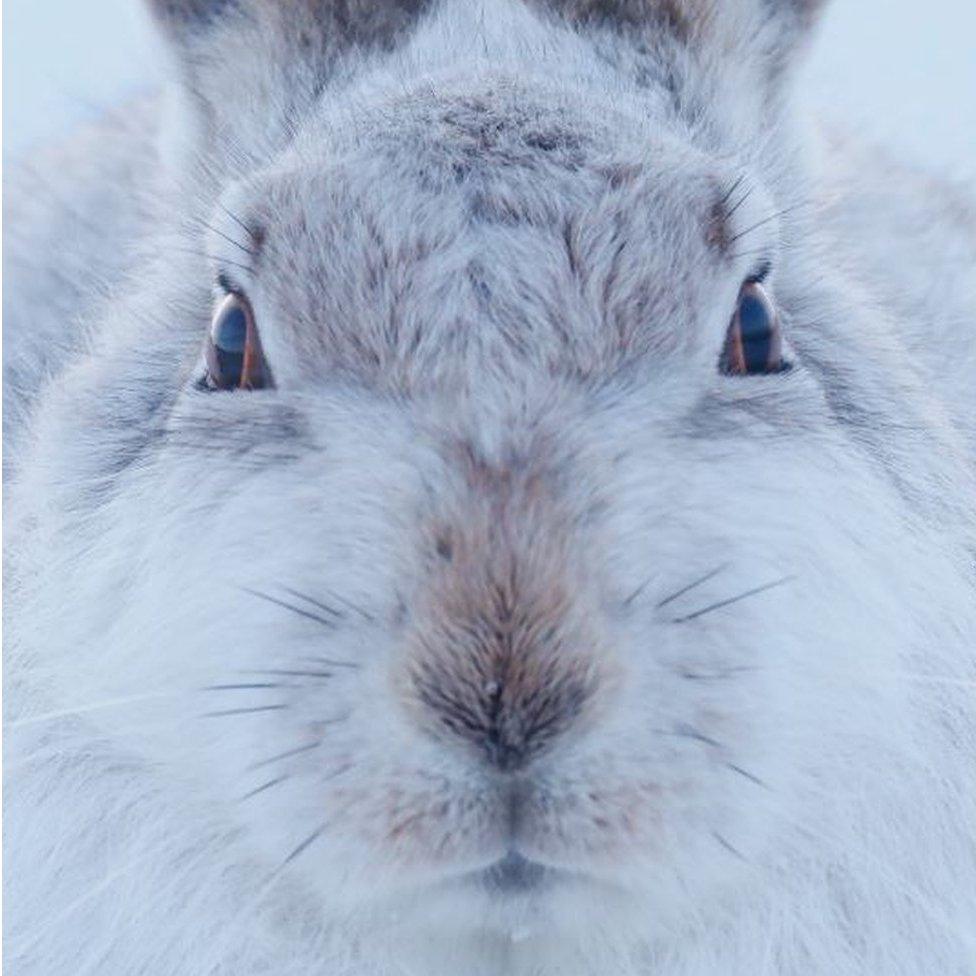
Mountain hares died out in England during the last ice age, though they survived in Scotland. However, in the 1870s, some landowners reintroduced them in England and they began to thrive in the Peak District.
Mountain hare pelage is brown in summer and turns white in winter. Once it was thought the hares ate snow to turn white. In fact, the change relates to differences in day length and air temperature, which stops them producing brown melanin in their fur.
There are populations of mountain hares in Scotland and Northern Ireland.
Source: Carlos Bedson

Follow BBC East Midlands on Facebook, external, Twitter, external, or Instagram, external. Send your story ideas to eastmidsnews@bbc.co.uk.
Related topics
- Published27 January 2021
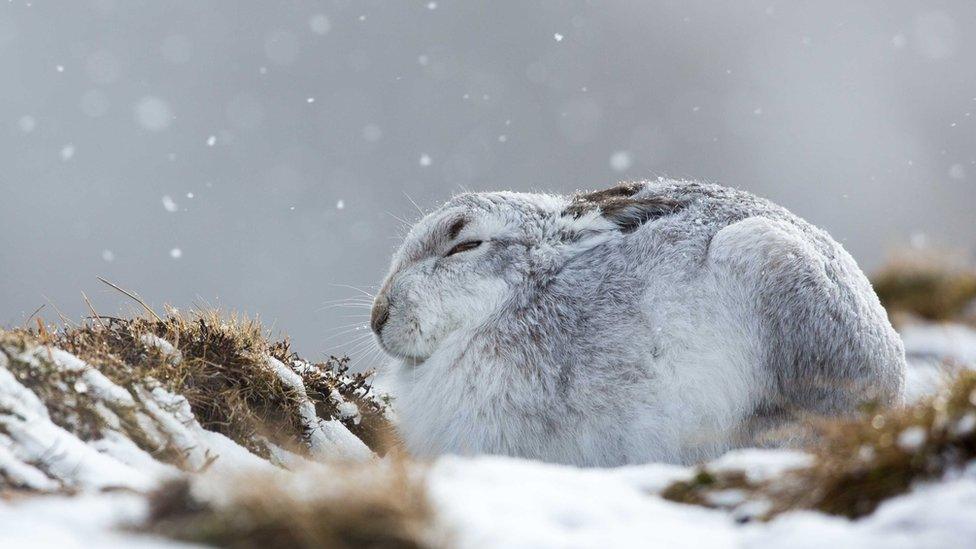
- Published11 November 2019
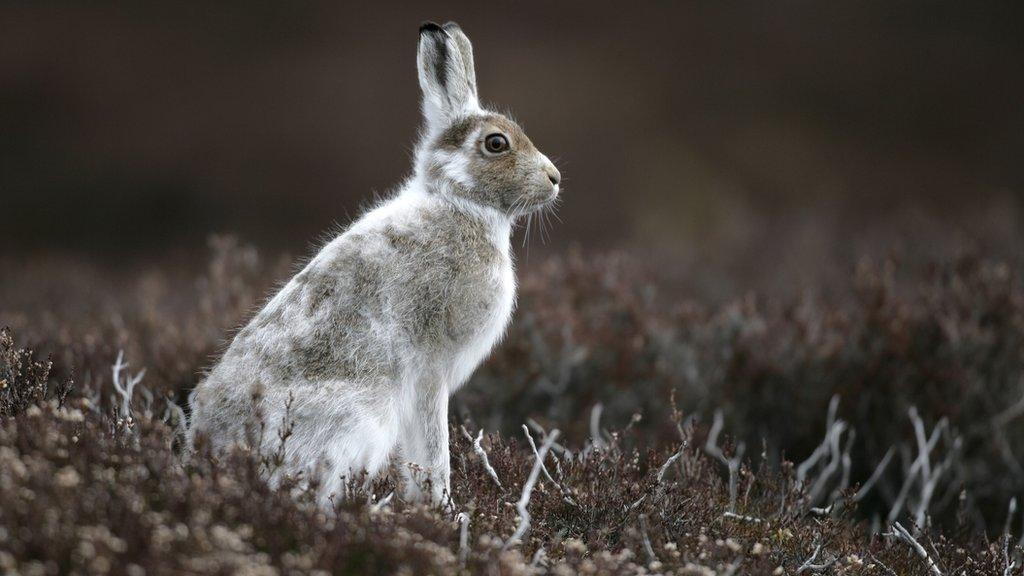
- Published14 August 2018
